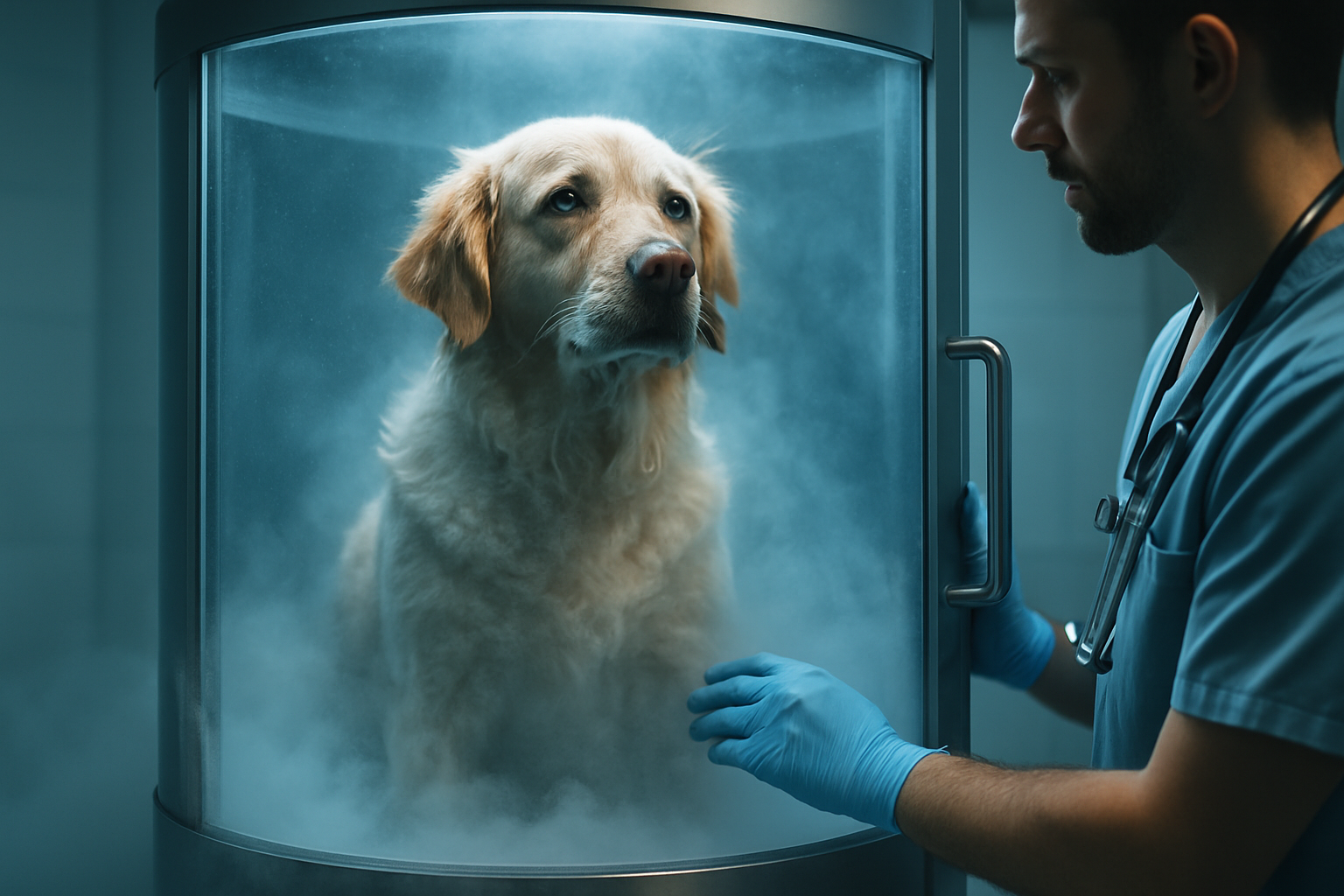Canine Cryotherapy: Unleashing the Cold for Healing
Imagine a world where your furry friend could benefit from the same cutting-edge recovery techniques as professional athletes. Welcome to the chilly realm of canine cryotherapy, a revolutionary treatment that's taking the veterinary world by storm. This innovative approach harnesses the power of extreme cold to promote healing, reduce inflammation, and enhance overall well-being in our four-legged companions. As pet owners seek advanced solutions for their dogs' health concerns, cryotherapy emerges as a promising frontier in veterinary medicine.

When exposed to these frigid temperatures, a dog’s body initiates vasoconstriction, redirecting blood flow from the extremities to vital organs. This process helps reduce inflammation and swelling in affected areas. As the body warms up post-treatment, increased blood circulation delivers oxygen and nutrients to tissues, promoting faster healing and recovery.
Applications in Veterinary Medicine
Canine cryotherapy has found its place in various aspects of veterinary care. Primarily, it’s used for:
-
Pain management: Particularly effective for dogs with chronic conditions like arthritis or hip dysplasia.
-
Post-surgery recovery: Helps reduce swelling and accelerate healing after operations.
-
Athletic performance: Aids in muscle recovery for working and sporting dogs.
-
Skin conditions: Can alleviate itching and inflammation in certain dermatological issues.
Veterinarians are continually exploring new applications, making this field an exciting area of ongoing research.
The Cryotherapy Process for Dogs
A typical canine cryotherapy session lasts between 2 to 3 minutes. The process begins with a thorough assessment of the dog’s health to ensure they’re suitable candidates. Dogs with certain conditions, such as severe heart problems or untreated hypertension, may not be eligible for treatment.
During the session, dogs are placed in a specially designed cryotherapy chamber. These chambers are typically cylindrical and allow the dog’s head to remain outside, ensuring comfort and safety. The chamber is then filled with nitrogen vapor, rapidly lowering the temperature.
Throughout the process, a trained technician monitors the dog’s behavior and vital signs. Many dogs surprisingly tolerate the cold well, often appearing calm or even enjoying the experience.
Benefits and Potential Risks
The benefits of canine cryotherapy are numerous and include:
-
Reduced inflammation and pain
-
Improved mobility, especially in older dogs
-
Faster recovery from injuries or surgeries
-
Enhanced overall well-being and energy levels
However, like any medical treatment, there are potential risks to consider. These may include:
-
Skin irritation or frostbite if not properly monitored
-
Anxiety or stress in some dogs
-
Potential exacerbation of certain health conditions
It’s crucial for pet owners to consult with a veterinarian before considering cryotherapy for their dogs.
The Growing Market for Canine Cryotherapy
As awareness of canine cryotherapy grows, so does the market for related products and services. Specialized cryotherapy chambers for dogs can range from $30,000 to $100,000, depending on size and features. Many veterinary clinics are investing in this technology, seeing it as a valuable addition to their treatment offerings.
Mobile cryotherapy units are also emerging, bringing the service directly to pet owners’ homes or local parks. These mobile units typically charge between $40 to $80 per session, making the treatment more accessible to a broader range of pet owners.
The global market for veterinary cryotherapy equipment is projected to grow significantly in the coming years, with some analysts predicting a compound annual growth rate of over 8% through 2026.
Training and Certification for Canine Cryotherapy
As the field expands, there’s a growing need for properly trained professionals to administer canine cryotherapy. Several organizations now offer specialized courses and certifications for veterinarians and vet techs interested in this area.
These programs typically cover topics such as:
-
The physiological effects of cryotherapy on canine bodies
-
Proper use and maintenance of cryotherapy equipment
-
Safety protocols and risk management
-
Patient assessment and treatment planning
Certification not only ensures the safety and effectiveness of treatments but also helps build trust with pet owners seeking this innovative therapy for their beloved companions.
Future Prospects and Research
The future of canine cryotherapy looks promising, with ongoing research exploring its potential in various areas of veterinary medicine. Some exciting avenues include:
-
Combining cryotherapy with other treatments for enhanced effects
-
Developing targeted cryotherapy techniques for specific conditions
-
Exploring the long-term benefits of regular cryotherapy sessions in aging dogs
As more data becomes available, we can expect to see refined protocols and potentially new applications that could revolutionize how we approach canine health and wellness.
In conclusion, canine cryotherapy represents an exciting frontier in veterinary medicine, offering new hope for dogs suffering from various conditions. As research progresses and technology advances, this chilly treatment may become a standard part of comprehensive canine care, helping our furry friends lead healthier, more comfortable lives.





